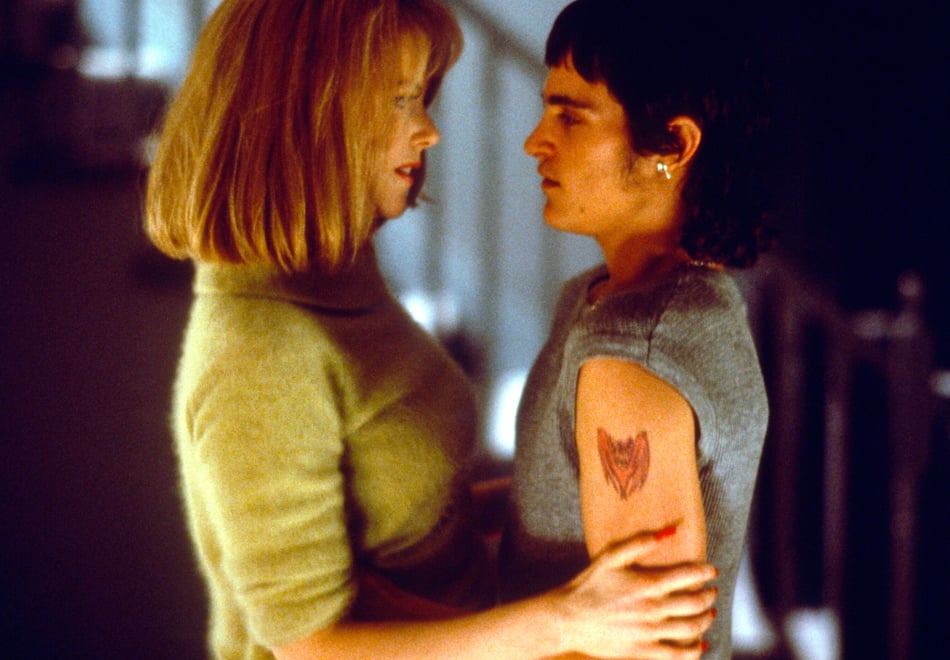“It is a game of odds: if she plays the odds well she is released into mastery; if she plays badly she forfeits her life.”
- Vivian Gornick, from her essay, “On Trial For Acting Like a Man”
Candid photos are a con. There are women, of whom I know a few, who consider them stolen goods. Why, they wonder, are “natural” moments worth more than a bid at control? If snapping into character is one way of experiencing clout, of controlling factors such as good lighting, bad lighting, one’s good side, one’s bad side—all self-styled, of course—then these mini manipulations are not merely protective: they’re muscle. Our province. Find me a woman who, no matter how indifferent she is to having her picture taken, hasn’t faked a candid. As writer Rachel Syme recently noted in her opus on the “radical potential” of the Selfie, the form provides “a blessed course-correct … a chance to refocus the narrative that others might want to tell about you.”
Still, unstudied with some scheme, candid photos tell—or, rather, confess—wonderfully chance stories. That is, of course, for those of us who dawdle in that sort of thing. Who valorize half-moments, perceive poems in movie stills yet balk when asked to describe that same movie’s plot. Who spot the one woman in every group photo—at a birthday, perhaps hers—invariably tucking her hair behind her ear, long-faced and not yet ready to lend her smile to the mood.
To see so much in so little, to compulsively portion the main attraction into morsel-sized payoffs, can grow tedious, and yet here we are: eternally a little elsewhere, making a point of missing the point. Like a troupe of enthusiastic slowpokes intent on facing our telescopes away from the action, persuaded by the windows in museums more so than the art, and always, as if by habit, imparting narrative to a stranger’s candid moment; fictionalizing her private breath before she blinks once, turns on, and designs herself. Before she dips her chin and tenses into, by virtue of a photo’s invention, someone counterfeit: how she’d like to be perceived. Sexy, assured, refusing. Capable of filleting you with her half-grin. In deep revel. Teenaged and impatient. Happy, even.
These are the thoughts that cross my mind as I scroll through, of all things, a Cannes Film Festival photocall two decades old, taken outside and set against the French Riviera’s azure scope, where no matter the season the weather is, I’d like to think, ideal for drying laundry on a clothesline. A breeze contrived for ironing out wrinkles.
It’s May, 1995. Gus Van Sant and Nicole Kidman are at Cannes to promote his fifth feature, the satirical black comedy To Die For. Following the back-to-back successes of Drugstore Cowboy and My Own Private Idaho, and the much lesser loved critical and commercial flop Only Cowgirls Get the Blues, To Die For marked Van Sant’s return and a major turn in Kidman’s career. Written by Buck Henry (The Graduate), the film was based on Joyce Maynard’s novel, which was itself loosely inspired by the events leading up to the trial of Pamela Smart, a New Hampshire woman who’d planned on having a career in broadcasting but in 1991 was sentenced to life in prison for conspiring with her 15-year-old lover to kill her husband. Highly televised, the two-week trial was further dramatized by tabloid headlines such as “Grieving Spouse vs. Black Widow,” detailing the days leading up to her sentence, down to the bow Smart wore in her blonde hair each day at the Rockingham County Superior Court. It was, some argue, a trial by media, and together with The Real World and Court TV, marked the beginning of reality television as we’ve come to know it, predating another famous murder trial which gave rise to the Kardashian family’s dynasty—a dynasty that, despite reality TV’s nominal candidness, hinges wholly on retaining control. The more you have of it, the greater your jurisdiction.
At To Die For’s Cannes photocall, where the film was screening out of competition and ahead of its fall release, one picture in particular of Van Sant and Kidman comes to mind. I’ve always loved how directors appear unlikely-paired when standing next to their leads. How mutual respect between two people can, on occasion, look terribly awkward. Pasted together like a collage. While it’s usually a matter of height, clothes, gloss, grooming, there is, too, that quality movie stars possess: their very own aspect ratio. Luster sourced from some place secret. An exclusive deal with the elements.
Dressed in his Portland best—a blue and white plaid shirt—Van Sant pauses to take a photo with his own camera of what I imagine is a mob of press photographers all shouting, Gus! Nicole! Monsieur Van Sant! Mademoiselle Keeed-mahn! While he focuses his lens, Kidman looks on, appearing stately in a blush-pink double-breasted jacket. She flashes—or perhaps lets slip—a toothy deferential smile, and briefly, she becomes kid Kidman. Unmonitored and relaxed. Owing to Van Sant’s paparazzi hijinks, she can momentarily acquit herself from the Nicole Kidman fostered for and by the public.
Though just as fast, as if reminded of the spectacle of celebrity and its dues, her face refastens. In every photo that follows, Kidman narrows her blue eyes, pouts or grins with her jaw clenched as if dismissing a deep chill that’s suddenly overcome her. Any chance of a candid moment has evaporated. It’s hard to tell if Kidman is casting a spell or has fallen under one. Some faces are simply cut like that. Perfectly feline, built to screw with our perception of who’s in charge.
In this way, that picture of Van Sant and Kidman provides a terrific glimpse into To Die For’s main theme: the discrete manners that shift who we are or how we present ourselves when being observed. These deviations might be small, like the rigidity of our posture or the speed of our voices. But they can also be more elaborate, like the entire tenor of our personality or the moral caliber of our actions. When being observed, do we act better or worse? Are these amendments aspirational or recourse? It’s inescapable. From the moment we sense another’s gaze, we calibrate. Something cinches and our imagined self gains consciousness.
As with most films that have acquired over time a cult-like following—that keep those who are observant feeling hectic, like we’ve been in on something dissident and scandalously good all along—To Die For is, twenty years out, both prescient and all the more relevant.
*
“You’re not anybody in America unless you’re on TV,” says Kidman’s character Suzanne Stone, an ambitious weather girl at the local cable news station, whose dreams of becoming the next Diane Sawyer or Connie Chung mean getting rid of her clod of a husband, Larry Maretto (Matt Dillon). He’d prefer she focused on having mini-Marettos. On cultivating the family portrait. And so, with the help of her teenaged lover, Jimmy (Joaquin Phoenix), whose incentives are the wiles of first love as he’s conceived them—that, and blowjobs—and accompanied by his delinquent friends, Russell and Lydia (Casey Affleck, Alison Folland), the four plot Larry’s murder as if it were an extracurricular activity. The kind of thing you might do, if you were a Van Sant teen spookily scored by death metal and Danny Elfman, between school and home when loitering at the food court or local junkyard no longer appeal.

What Kidman does so convincingly—guided in part by Henry’s tight, sardonic script—is saturate the screen with incongruence. To look bored while wearing neon paisley at a backyard barbecue is, somehow, delightfully sinister. To appear taken by someone yet numbed to his being is a matter of clever conservancy. More directly, Suzanne emotionally divests because she sees her life not as it’s happening but with an atomic understanding of what will occur if she does not maintain control of it. Little furies build. She tends to them.
Suzanne has charge and yet, despite always being on, there’s rarely a moment when she isn’t slightly off. Even her pep is potent. When she doesn’t get what she wants, she sulks. When she does, she giggles. The sound is strange. Like a deflating helium balloon squealing as it shoots up only to dip and shrivel. Are these qualities trained? Devious? Has she gone mad? Is she evil? Would it matter if she weren’t beautiful? “How swiftly a woman can be portrayed as a villain,” Maynard mentions during our conversation, “if she is not living her life in the service of men.”
In one scene following Larry’s murder, Suzanne is standing on the town’s courthouse steps surrounded by reporters. She looks sovereign, as though she is presiding over the huddle instead of at its mercy. Has she designed this spectacle? Destined it? Is she a widow, the accused, or the victim? Why does the whole affair seem orchestrated?
“When I wrote the book, I was living in New Hampshire. I remember the night that Pamela Smart came on television very shortly after the murder of her husband,” Maynard tells me. “This is much before she was arrested. She was just weeping and saying, ‘If anybody knows anything about who committed this crime, please come forward.’ And I did see it as a performance, whether she was guilty or innocent. People just behave differently with the camera on them.”
Like John Gregory Dunne wrote in his essay, “The Simpsons,” describing the events of June 17th, 1994, when A.C. Cowlings drove his white Bronco through southern California’s freeways with his teammate OJ Simpson in the back seat holding a gun to his head, it was a “stately choreography reminiscent of water ballets from M-G-M’s old Esther Williams musicals.” Escorted by the police and watched by 95 million viewers, reality had crossed into the imaginary. It was pure cinema, the “slowest chase in television history,” writes Dunne, “that no director would dare stage.” The slow-speed, sixty-mile chase paused the entire city of Los Angeles. Domino’s Pizza reported record sales. NBC cut away from Game Five of the NBA Finals. Audiences were glued to their screens. “Choreography,” to use Dunne’s term, perfectly captures the chase’s dazzling effect. When reality nears synchronized bigness, it suddenly becomes fiction. A new threshold was reached—or was it that the formula was now, from this point forward, mangled? Someone famous could, too, receive his fifteen minutes.
While satire often calls for dark comedy effected by one-note characters, Kidman’s rendering of Suzanne is, I’d venture, satirical, yes, but mostly: woman. She’s multitudes, instinct, intention, and body. She’s all those things and then, just as swiftly, none of those things. She’s a pair of shoulders pushed back the second the camera operator says, “You’re on!” She provokes not for the sake of it—or maybe, a little—but mainly out of obligation. Terrified of being ordinary, of its complaisance or worse, of a life on layaway, Suzanne will do whatever she can to avoid such a fate. As the film’s title suggests, the cost is of zero consequence. Until of course it is.






